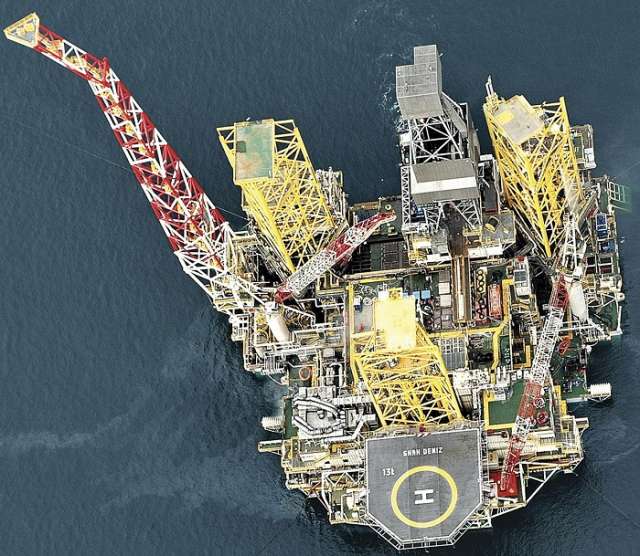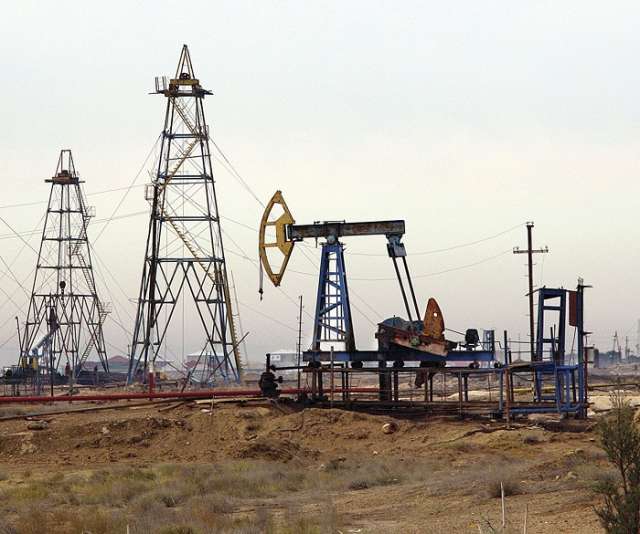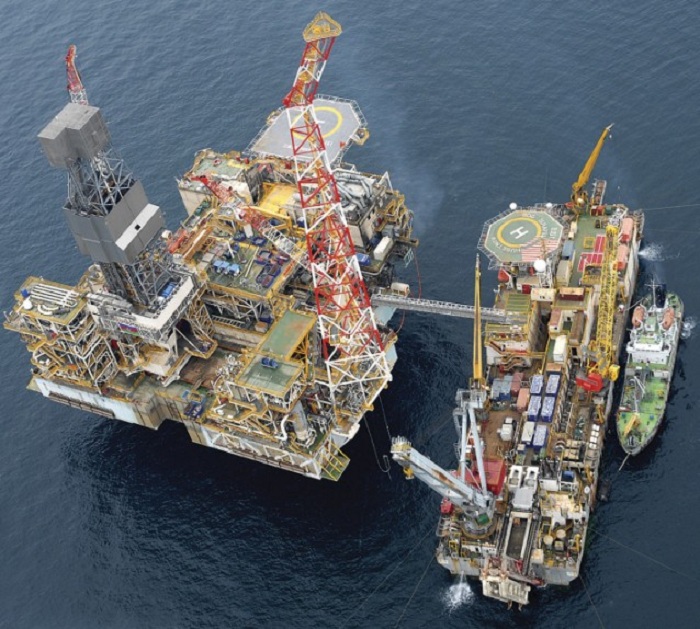On 20 September 1994, Azerbaijan struck the deal of the century: a massive programme to develop the giant Azeri-Chirag-Guneshli (ACG) oilfield complex and the pipelines required to carry the crude to international markets.
At that stage no one knew just how much oil could be produced, at what price and by what route it might reach its anticipated markets in the Mediterranean, Europe and North America.
But the contract became the bedrock of Azerbaijan’s success as a major hydrocarbon producer, initially in oil and subsequently in gas, and, above all, in securing its reputation as a reliable partner for foreign companies seeking to secure further investments in the country’s hydrocarbon sector.
The reliability of Azerbaijan could almost be said to have come about as an unintended consequence of the way in which the ACG contract had been agreed. Firstly, the contract was the result of a remarkable piece of diplomacy. Instead of awarding a series of individual contracts for development of separate fields, or sections of field, to individual companies seeking to secure concessions in the newly independent country, the Azerbaijani government of President Heydar Aliyev had decided that all the competing companies would have to pool their efforts and create a single entity to develop the whole set of fields on a production-sharing basis. Secondly, because it was such a complex affair, the government - then still in a very shaky position in a country devastated by war and financial collapse in the wake of the fall of the Soviet Union - decided that it should be enshrined in a specific act of parliament.
The contract became the bedrock of Azerbaijan’s success as a major hydrocarbon producer
What happened then was that every subsequent agreement to develop projects on a production-sharing basis was similarly enshrined in an individual piece of parliamentary legislation. The result is that companies in Azerbaijan have never had the problems that they have encountered elsewhere in the region whereby they are under pressure to conform to uniform legislation, which may or may not suit their interests and which is sometimes imposed retrospectively. In Azerbaijan, when times were good new entrants simply found they had to agree to tougher conditions for their production sharing agreement (PSA); when times were not so good they were offered easier terms.
The other main consequence of the Contract of the Century was that it led to the pre-eminence of BP as the international strategic partner of the Azerbaijani state in developing not only the ACG complex, but also the giant gas discovery at Shah Deniz and various other fields as well.

At the foundation ceremony of the Baku-Tbilisi-Ceyhan main oil pipeline, 18 September 2002. In the photo are the former presidents of Azerbaijan, Georgia and Turkey, Heydar Aliyev, Eduard Shevarnadze and Ahmet Necdet Sezer respectively, and the former US secretary of energy, Spencer Abraham
This was not an automatic development. Originally BP had shared a virtually equal stake with the US Amoco in the Azerbaijan International Operating Company (AIOC), the consortium set up to run ACG project, but in 1998 BP took over Amoco, effectively doubling its stake from 17% to 34% (the original shareholders were: SOCAR 20.000%; Amoco 17.010%; BP 17.1267%; Delta 1.680%; Lukoil 10.000%; McDermott 2.450%; Pennzoil 9.8175%; Ramco 2.0825%; Statoil 8.5633%; TPAO 1.750%; and Unocal 9.520%).
Getting the oil to market
The complexity of the task confronting BP and its partners in the original AIOC was extraordinary. Major practical and political obstacles had to be overcome, both to bring equipment into the Caspian Sea for AIOC development and to secure ways out of the Caspian Sea to get the oil to market. Azerbaijan’s location meant that heavy equipment would have to be brought into the Caspian via the Volga-Don system through southern Russia. This obviously required Moscow’s agreement. As for getting the oil to market, was it reasonable to rely on existing pipeline systems through Russia or should new lines be developed? And if new lines were to be developed, then in which direction?
At that time, in 1994, Georgia was only just coming out of civil war, Armenia, in geographical terms the easiest route into Turkey, was - and still is - occupying roughly one-fifth of Azerbaijan in the wake of the war over Nagorno-Karabakh; and Iran posed problems because of what were then United States sanctions against Tehran.
Although there have been no major oil discoveries since ACG , Azerbaijan does possess a number of significant offshore gasfields in addition to Shah Deniz
By virtue of an initial agreement in the autumn of 1995, BP attempted to solve both problems. A reversal of the pipeline from Novorossiysk that used to carry Russian oil to Baku for refining was agreed, and at the same time, as a result of President Eduard Shevardnadze restoring a degree of order to much of Georgia, a second export pipeline would be developed, often using existing pipe, to the Georgian port of Supsa.
The Baku-Novorossiysk line began carrying oil in October 1996, with a nominal capacity of around 100,000 b/d but which was seldom used to carry much more than 50,000 b/d. Baku-Supsa started shipping crude in April 1998 and was soon routinely carrying well over 100,000 b/d of Azerbaijani oil exports to market. But this still left unsolved the issue of a Main Export Pipeline. The late 1990s witnessed a sharp difference of approach between BP, which favoured expansion of Supsa, and the Azerbaijani and Turkish governments, backed by Washington, who wanted to see a massive one million b/d pipeline built all the way to the Turkish Mediterranean port of Ceyhan. In the end, the issue was resolved when Turkey’s Botas signed a lump sum turnkey contract in October 2000 under which it undertook to build the 1076km Turkish section of the projected 1800-km pipeline for the fixed sum of $1,307,610,000.

The Shah Deniz Oil Production Platform
This was crucial, since it limited the liability of the partners developing ACG at a time when oil prices were at rock bottom. Ironically, by the time the pipeline opened in May 2006, no one cared very much that the total cost had come in at more than $4 billion instead of the $2.4 billion or $2.95 billion previously estimated – and by that time, oil prices had more than doubled since 2000 to well over $60 a barrel.
In the years since then, Azerbaijani production, essentially from ACG, rose steadily until 2009, when it reached the symbolic mark of one million barrels a day. It rose a little further in 2010, but has since fallen back and is currently running at a rate of around 840,000 b/d, of which ACG accounts for around 650,000 b/d. But although ACG has, in volume terms, not performed as well as was hoped – or as BP had promised in the 1990s – the high oil prices that characterised the decade from 2003 to 2013, when oil prices quadrupled from around $26 to $105 a barrel, more than compensated in terms of anticipated earnings for both the Azerbaijani government and the companies developing ACG.
Current investment in a new offshore platform should ensure that such a level is maintained for several years to come. But there is no doubt that both the Azerbaijani authorities and the private companies engaged in offshore exploration would really like to find another major oilfield.
Plenty of gas
What they have found so far, however, is gas. BP made the first big discovery in 1999 when it found the Shah Deniz field. This was quickly brought into production and in 2007, started exporting small amounts of gas to Georgia and around 5 billion cubic metres (bcm) to Turkey via the Baku-Tbilisi-Erzurum system developed alongside the BTC pipeline.
But while Phase I of Shah Deniz was predicated on producing 8 bcm/y of gas a year, with 6 bcm slated to go to Turkey, although lack of capacity on the Turkish side ensured this level was not reached for many years, the field itself contained reserves sufficient for a much larger programme. BP estimated these reserves at 1.2 trillion cubic metres, while the Azerbaijani government commonly spoke of Shah Deniz possessing 2 trillion cubic metres. In either case it was easy enough to justify production of 25-30 bcm/y. So BP and its partners embarked on the ambitious Shah Deniz Phase 2 (SD2) project intended to produce 16 bcm/y of gas for export, with 6 bcm/y going to Turkey and 10 bcm/y to European countries beyond Turkey.
What made this project so different from development of ACG was the very much larger role that Azerbaijan itself played in getting the project off the ground and is still playing today in terms of implementing it.
The role that the State Oil Company of Azerbaijan (SOCAR) has played, and is playing in this process has been immense. It was the principal actor in striking an agreement with Turkey on the terms of both a gas contract with Turkey and development of a pipeline across Turkey to carry gas onwards to the rest of Europe. It was also responsible for most of the negotiations on the sale of gas to Europe. When a final investment decision for the Shah Deniz 2 project was taken in December 2013, it was part of a chain of interconnected decisions involving not simply the investment that had to be made in developing the upstream elements, notably the wells and immediate offshore and onshore handling facilities, but also the investment required for some 4,000km of pipeline to carry the gas all the way from the onshore Caspian Sea terminal at Sangachal to southern Italy.
The total of all of these investments was at that time estimated at around $45 billion. Since then, partly as a result of lower energy prices and lower steel prices, the costs have been substantially revised downwards with Azerbaijani Energy Minister Natiq Aliyev assessing current costs as follows: offshore and onshore Shah Deniz 2 development, $18.9 billion; expansion of the existing South Caucasus Pipeline from Sangachal to the Georgia-Turkey border, $4.9 billion; construction of the 1,850-km Trans Anatolian Pipeline (Tanap) across Turkey to the Turkish border with Greece at Ipsala/Kipoi, $9.3 billion; and construction of the 870-km Trans-Adriatic Pipeline (TAP) from Ipsala-Kipoi to a junction with the Italian pipeline system near Lecce in southern Italy, $6 billion.
In terms of future development, the main issue is not security but ensuring that oil and gas projects are commercial in an era of comparatively low energy prices
These projects, collectively known as the Southern Gas Corridor, will initially serve to carry Shah Deniz 2 gas to market, with deliveries to Turkey, which is contracted to buy 6 bcm/y, starting in the second half of 2018 and deliveries to EU customers, which have contracted to purchase 10 bcm/y, starting in early 2020. But the system is being built so that it can carry twice these amounts, opening the way for what Azerbaijan hopes will be the ‘next wave’ of gas development in its section of the Caspian.
Although there have been no major oil discoveries since ACG, Azerbaijan does possess a number of significant offshore gasfields in addition to Shah Deniz. Drilling at ACG itself has revealed an untapped layer of gas, but this lies at a depth below the designated level for resource development agreed in the 1994 Contract of the Century. Negotiations are in train for BP to develop this resource, which should be capable of producing around 5-6 bcm/y.
In July 2012, France’s Total declared it had made a commercial gas discovery at Absheron, and since then has been preparing outline plans for its prospective development. In theory, this could result in the start of actual production in 2021 but it will likely be delayed a few years as a result of the shortage of rigs available to drill production wells.
Challenges ahead
It’s not always been an easy ride, and there are some uncertainties concerning the future. Russia’s invasion of Georgia in August 2008 pointed out the risks involved along the corridor, both in terms of Azerbaijan’s interest in maintaining good relations with both investor and consumer countries, Turkey, the United States and the United Kingdom and because it provided a strong reminder that Azerbaijan itself shares a common border with Russia. Russian forces did not sever the pipelines carrying Azerbaijani oil and gas to export, but the invasion did demonstrate their vulnerability. Moreover, the only reason that oil markets were not engulfed in turmoil over the invasion was that just 36 hours before the fighting broke out a section of the BTC line in Turkey was blown out in a mysterious explosion that was initially considered to be a Kurdish separatist attack but which was subsequently reported to have been the result of a sophisticated cyber attack.

An oil field on the outskirts of Baku
Likewise, four days of clashes in April with Armenian forces along the line of control that serves to separate the two sides in the Nagorno-Karabagh conflict provided a similar reminder of the delicacy of a situation in which Azerbaijan’s energy arteries remain located within range of Armenian artillery, thus strengthening the case for a diplomatic settlement of a supposedly frozen conflict that has resulted in some 800,000 Azerbaijanis being displaced from their homes.
However, in terms of future development, the main issue is not security but ensuring that oil and gas projects are commercial in an era of comparatively low energy prices. Azerbaijan was able to get the giant Southern Gas Corridor projects off the ground before the recent price decline set in. It now has to adapt to project development in a low-price era.
John Roberts is an international energy security expert, a senior partner with Methinks Ltd, a consultancy specializing in the inter-relationship between energy, economic development and politics and a senior fellow at the Atlantic Council, a Washington DC-based think tank.
www.visions.az
















































